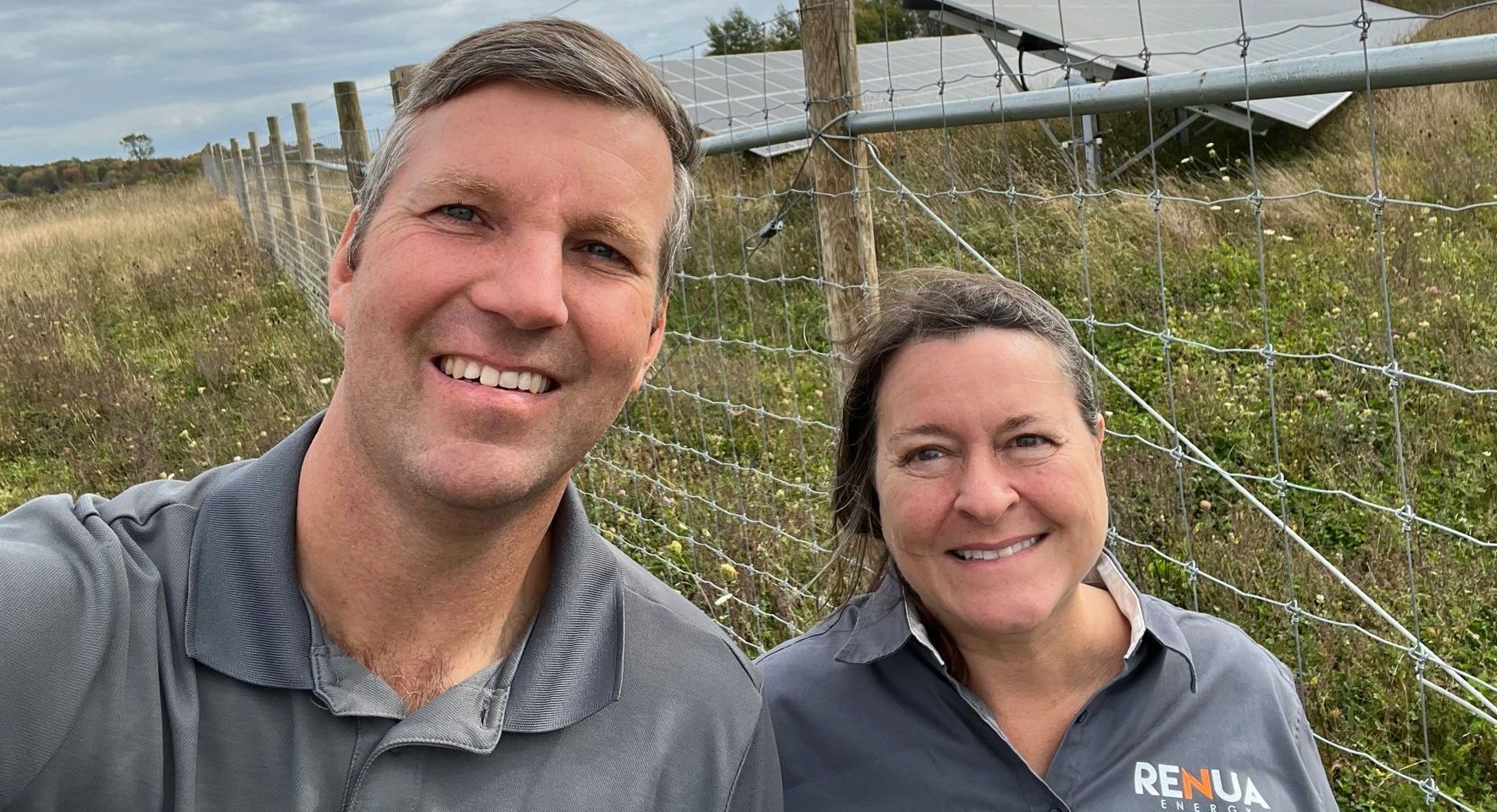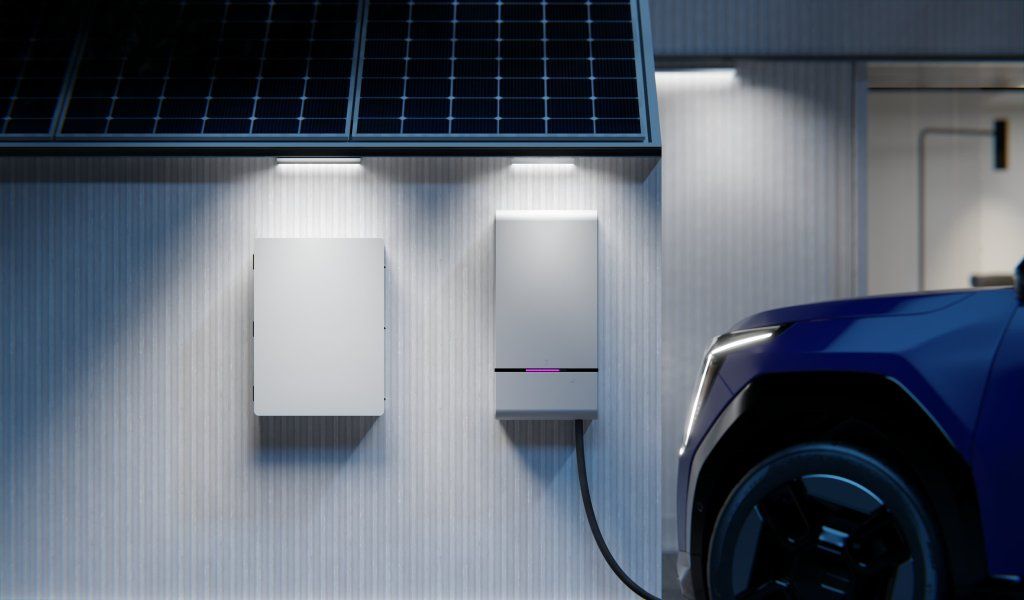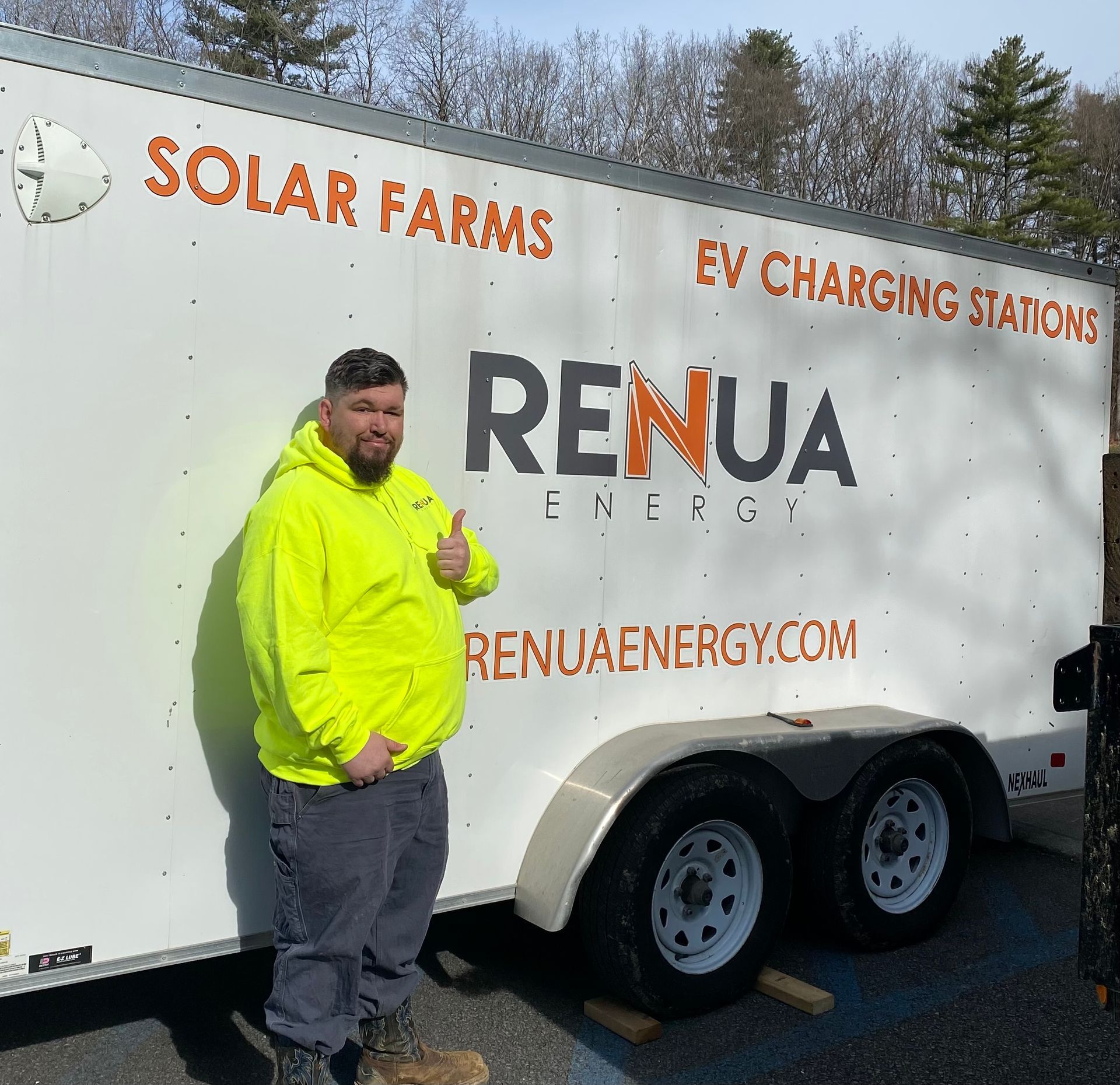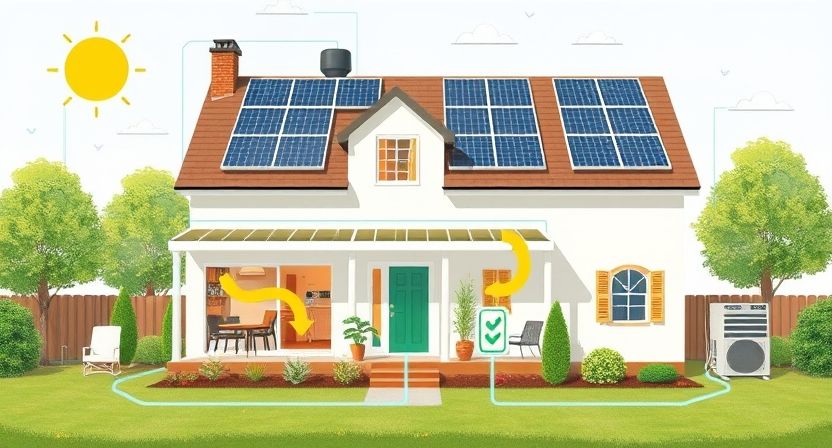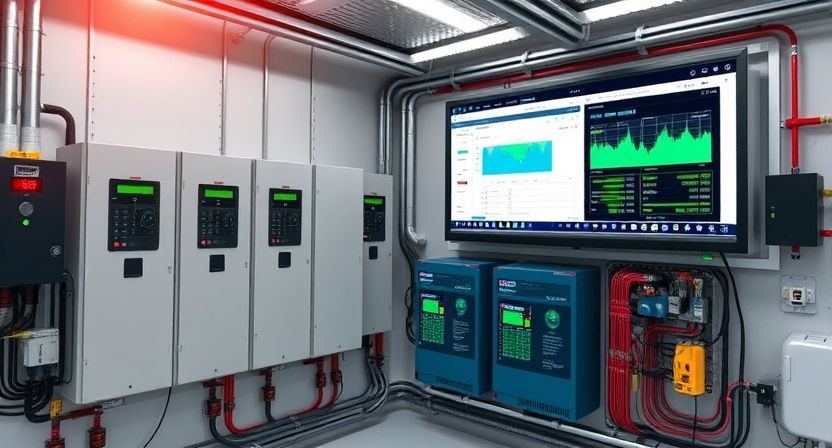V2H Technology: Powering the Future of Residential and Small Commercial Energy
Bi-directional Charging is a Transformative Technology

Vehicle-to-Home (V2H) technology is a transformative innovation that turns electric vehicles (EVs) into mobile power stations for homes and small businesses. V2H offers unparalleled value and security, providing energy independence, cost savings, and reliability. We’ll highlight offerings from industry leaders—GM Energy, Ford, Tesla, and Kia Motors—and provide market growth projections for the next five years, with a focus on the Northeast USA.
What is V2H?
Vehicle-to-Home (V2H) technology allows EVs to transfer stored energy from their batteries to power homes or small commercial buildings. This is achieved through bidirectional charging, where energy flows both ways: from the grid or renewable sources to charge the EV, and from the EV to supply power to the home during outages or peak demand periods. V2H is part of the broader Vehicle-to-Everything (V2X) ecosystem, which includes Vehicle-to-Grid (V2G) and Vehicle-to-Load (V2L).
Why V2H Matters
For residential and small commercial customers, V2H is a game-changer. It empowers you to:
- Reduce Energy Costs: Use stored EV energy during high-rate periods.
- Ensure Power Reliability: Keep essential systems running during outages.
- Promote Sustainability: Integrate with renewable energy for a lower carbon footprint.
- Enhance Energy Independence: Rely less on the traditional power grid.
As energy demands grow and power outages become more frequent due to extreme weather, V2H offers a practical solution for energy resilience.
How V2H Works
V2H systems rely on specialized equipment to enable two-way energy flow. Here’s a breakdown of the process:
- Charging Phase: The EV’s battery is charged using electricity from the grid or renewable sources like solar panels.
- Discharging Phase: During outages or high-demand periods, the EV’s battery supplies power to the home via a bidirectional charger.
- Key Components:
- Bidirectional Charger: Converts DC power from the EV battery to AC power for home use.
- Inverter: Ensures compatibility with home electrical systems.
- Home Energy Management System (optional): Optimizes energy usage and integrates with solar or stationary batteries.
The process is user-friendly, with many systems offering mobile apps for monitoring and controlling energy flow. For example, GM Energy’s app allows seamless management of power transfer (GM Energy).
Benefits of V2H for Residential and Small Commercial Customers
V2H technology delivers a range of benefits tailored to the needs of homeowners and small business owners.
Energy Independence
By using your EV as a power source, you reduce reliance on the grid, especially in areas prone to outages. This is particularly valuable in the Northeast USA, where winter storms can disrupt power supply.
Cost Savings
V2H enables you to store energy when electricity rates are low (e.g., overnight) and use it during peak hours, potentially saving hundreds of dollars annually on utility bills. For small businesses, this can translate to significant operational cost reductions.
Backup Power
During power outages, V2H ensures that critical appliances—refrigerators, lights, medical devices, or business equipment—remain operational. For instance, the Chevrolet Silverado EV can power a home for up to 21 days with reduced usage (GM Energy).
Environmental Benefits
V2H promotes clean energy by integrating with renewable sources like solar panels. By storing excess solar energy in your EV and using it to power your home, you maximize the use of renewable resources and reduce your carbon footprint.
Grid Stability
V2H systems help balance energy demand and supply, contributing to a more resilient grid. This is especially important during peak demand periods, reducing strain on utility infrastructure.
Flexibility for Small Businesses
Small commercial customers can use V2H to maintain operations during outages, ensuring continuity for point-of-sale systems, refrigeration, or other critical equipment. This minimizes downtime and revenue loss.
Impact
Energy Independence Less reliance on grid during outages Maintains operations during power disruptions Cost Savings Lower electricity bills with off-peak charging Reduced operational costs Backup Power Powers essential home appliances Keeps critical business systems running Environmental Benefits Reduces carbon footprint with renewables Enhances sustainability credentials Grid Stability Contributes to balanced energy demand Supports community-wide grid resilience 4. Security Aspects of V2H
Safety and security are critical considerations for V2H adoption. Leading systems incorporate robust measures to protect users and their properties.
Safety Features
- Overcurrent Protection: Prevents electrical overloads by limiting current flow.
- Grounding and Isolation: Safeguards against electrical faults.
- Automatic Shut-Off: Stops power transfer in case of anomalies, ensuring user safety.
Home Electrical System Protection
V2H systems are designed to integrate seamlessly with existing home wiring, preventing damage to appliances or circuits. For example, Ford’s Home Integration System ensures automatic switching between grid and EV power without overloading the system (Ford Lightning).
Cybersecurity
As V2H systems often integrate with smart home technologies, cybersecurity is paramount. Automakers like GM, Ford, Tesla, and Kia employ:
- Encryption: Protects data transmitted between the EV, charger, and home systems.
- Secure Communication Protocols: Prevents unauthorized access to energy management apps.
- Regular Software Updates: Addresses potential vulnerabilities in connected systems.
These measures ensure that V2H technology is both safe and reliable for everyday use.
Offerings from Major Automakers
Leading automakers are driving V2H innovation, offering solutions tailored for residential and small commercial customers. Below, we explore the offerings from GM Energy, Ford, Tesla, and Kia Motors.
GM Energy
GM Energy is a pioneer in V2H technology, offering a comprehensive suite of products for seamless energy transfer.
- V2H Bundle:
- Price: $7,300
- Components: Includes the GM Energy PowerShift Charger and V2H Enablement Kit.
- Compatibility: Currently supports the 2024 Chevrolet Silverado EV First Edition RST, with plans to expand to all Ultium-based EVs by 2026.
- Features:
- Powers a home for up to 21 days with reduced energy usage.
- Integrates with solar panels and stationary batteries via the GM Energy PowerBank.
- Managed through the GM Energy app for intuitive control.
- Additional Notes: Eligible for a 30% federal tax credit for energy-efficient home upgrades.
- Source: GM Energy V2H Bundle
- V2H Enablement Kit:
- Price: $5,600
- Purpose: Unlocks bidirectional charging when paired with the PowerShift Charger.
- GM Energy Storage Bundle:
- Includes the PowerBank (available in 5kW/10.6kWh or 7kW/17.7kWh models) for stationary energy storage, enhancing V2H capabilities.
GM Energy collaborates with Qmerit for professional installation, ensuring compliance with local regulations.
Ford
Ford’s F-150 Lightning is a leader in V2H technology, offering robust solutions for home backup power.
- F-150 Lightning with Intelligent Backup Power:
- Power Output: Up to 9.6 kW of continuous power.
- Features: Automatically switches to EV power during outages, ensuring seamless operation.
- Compatibility: Works with the Ford Charge Station Pro and Home Integration System.
- Source: Ford F-150 Lightning
- Ford Charge Station Pro:
- Purpose: A bidirectional charger that enables V2H functionality.
- Integration: Works with the FordPass app for real-time monitoring.
- Home Integration System:
- Partner: Sunrun, Ford’s preferred installer, ensures expert setup.
- Features: Syncs the F-150 Lightning with home electrical systems for efficient power transfer.
- Benefits: Keeps critical appliances running during extended outages, with the truck’s battery offering capacity equivalent to more than 10 home batteries.
Ford has also partnered with utilities like PG&E to pilot V2H programs, demonstrating real-world applications (Solar Power World).
Tesla
Tesla is entering the V2H market with its innovative Powershare technology, starting with the Cybertruck.
- Powershare Technology:
- Compatibility: Currently available on the Tesla Cybertruck, with plans to expand to all models by 2025.
- Power Output: 9.6 kW of continuous power through five outlets (two 120V 20A outlets in the bed and cabin, one 240V 40A outlet in the bed).
- Capabilities: Supports V2H, V2L, and potentially Vehicle-to-Vehicle (V2V) charging.
- Features: Enables the Cybertruck to act as a mobile power station for homes, worksites, or emergencies.
- Source: Tesla Powershare
- Future Plans:
- Tesla’s Senior VP of Powertrain and Energy Engineering, Drew Baglino, confirmed that bidirectional charging will be rolled out across all Tesla vehicles by 2025, leveraging advancements in power electronics to reduce costs.
- Third-party demonstrations, such as Ambibox’s V2H trial with the Tesla Model Y, suggest that Tesla vehicles may already have latent bidirectional capabilities (InsideEVs).
Tesla’s entry into V2H is expected to accelerate adoption, given its large market share and innovative approach.
Kia Motors
Kia Motors is emerging as a significant player in the V2H market, leveraging its EV lineup to offer bidirectional charging solutions.
- Kia EV9 with V2H Capability:
- Power Output: Up to 3.6 kW of continuous power, suitable for powering essential home appliances during outages.
- Compatibility: The Kia EV9, a flagship electric SUV, supports V2H with a compatible bidirectional charger.
- Features:
- Integrates with Kia’s Connect app for monitoring energy flow.
- Supports V2L and V2H, making it versatile for home and outdoor use.
- Designed for seamless integration with home energy systems, including solar panels.
- Availability: Kia has introduced V2H functionality in select markets, with plans to expand to the U.S. by 2026, aligning with growing demand for bidirectional charging.
- Source: Kia Global V2X Technology
- Future Plans:
- Kia is investing in V2X technologies, with the EV9 serving as a testbed for V2H and V2G applications. The company aims to make bidirectional charging a standard feature across its EV lineup by 2027.
- Partnerships with energy providers, such as Hyundai-Kia’s collaboration with utility companies in Europe, indicate a strategic focus on V2H adoption (Electrek).
Kia’s commitment to sustainability and innovation positions it as a key contender in the V2H market.
Global Market Projections
Research indicates that the Energy Management V2H Power Supply Systems Market will grow from USD 93.58 million in 2024 to USD 532.59 million by 2032, with a compound annual growth rate (CAGR) of 24.28% (Global Growth Insights). This growth is fueled by:
- Advancements in EV technology.
- Rising awareness of sustainable energy management.
- Integration with renewable energy sources like solar and wind.
Another report values the V2H market at USD 75.3 million in 2023, projecting the same USD 532.59 million by 2030, reinforcing the strong growth trajectory (Verified Market Reports).
USA Market Trends
The U.S. Electric Vehicle Market is expected to reach USD 137.43 billion by 2028, with a CAGR of 25.4% (Fortune Business Insights). V2H is a key component of this growth, as it enhances the value proposition of EVs by offering additional utility. The increasing number of V2H-capable vehicles and supportive government incentives are driving adoption.
Northeast USA Focus
The Northeast USA, encompassing states like New York, Massachusetts, Vermont, and New Hampshire, is likely to be a leader in V2H adoption due to:
- High Population Density: Greater demand for reliable energy solutions in urban areas.
- Sustainability Goals: States like New York have ambitious renewable energy targets, promoting technologies like V2H.
- Frequent Outages: Winter storms and extreme weather events make backup power solutions critical.
While precise market projections for the Northeast are limited, the region’s focus on clean energy and infrastructure development suggests strong potential for V2H growth over the next five years.
Future Outlook
The success of V2H adoption will depend on:
- Increased Vehicle Compatibility: More EV models supporting bidirectional charging.
- Cost Reduction: Lower prices for bidirectional chargers and installation.
- Utility Collaboration: Partnerships with utilities to streamline grid integration.
- Consumer Awareness: Education on the benefits of V2H for residential and commercial users.
As automakers like GM, Ford, Tesla, and Kia expand their V2H offerings, and as pilot programs demonstrate real-world benefits, V2H is expected to become a standard feature in the EV ecosystem.
Case Studies and Real-World Applications
V2H technology is already making an impact through pilot programs and real-world applications:
- GM Energy Demonstration: GM showcased the Chevrolet Silverado EV powering a mansion off-grid, highlighting its ability to support high-energy homes during outages (Car and Driver).
- Ford and PG&E Pilot: In California, Ford’s F-150 Lightning and Charge Station Pro are part of a V2H pilot with PG&E, offering participants incentives for using their EVs as backup power (Solar Power World).
- Tesla Cybertruck in Action: An X post highlighted the Cybertruck’s Powershare technology powering a remote site, demonstrating its versatility (InsideEVs).
- Kia EV9 Pilot: Kia conducted a V2H trial in Europe, powering a home with the EV9, showcasing its potential for residential applications (Electrek).
- Northeast Resilience: An X post from North Carolina described the F-150 Lightning’s V2H capabilities supporting a community during Hurricane Helene, underscoring its value in disaster-prone areas (X Post).
These examples illustrate V2H’s potential to transform energy management and enhance resilience.
How to Get Started with V2H
Adopting V2H technology is straightforward with the right steps:
Choose a V2H-Compatible EV:
- Options include the Chevrolet Silverado EV, Ford F-150 Lightning, Tesla Cybertruck, or Kia EV9.
- Check with manufacturers for upcoming compatible models (e.g., Tesla’s 2025 rollout, Kia’s 2026 expansion).
Install a Bidirectional Charger:
- Select the appropriate charger, such as GM’s PowerShift Charger, Ford’s Charge Station Pro, Tesla’s Universal Wall Connector (for future V2H support), or Kia’s bidirectional charger.
Set Up Home Integration:
- Some systems require additional equipment, like GM’s V2H Enablement Kit or Ford’s Home Integration System.
- Ensure compatibility with your home’s electrical panel.
Work with Certified Installers:
- Partner with professionals like Renua Energy to ensure safe and compliant installation.
Learn to Manage Energy Flow:
- Use manufacturer apps (e.g., GM Energy, FordPass, Tesla, or Kia Connect) to monitor and control energy transfer.
- Optimize usage by charging during off-peak hours and discharging during peak demand.
Explore Incentives:
- Check for federal tax credits (e.g., 30% for energy-efficient upgrades) and local utility incentives.
Contact RenuaEnergy.com for personalized guidance on selecting and installing V2H systems.
V2H technology is revolutionizing energy management, offering residential and small commercial customers a pathway to greater independence, security, and sustainability. With robust offerings from GM Energy, Ford, Tesla, and Kia Motors, and a market poised for exponential growth, V2H is set to become a cornerstone of the future energy landscape.
In the Northeast USA, where sustainability and resilience are priorities, V2H adoption is likely to accelerate, driven by innovative pilot programs and consumer demand.
Take the next step today and explore how V2H can transform your energy experience. Visit RenuaEnergy.com to connect with experts and start your journey toward a smarter, more resilient energy future.
Sources
- GM Energy V2H Bundle Product Page
- Ford F-150 Lightning Home Integration System
- Tesla Powershare Technology Overview
- Kia Global V2X Technology
- Energy Management V2H Market Growth Projections 2024-2032
- Vehicle-to-Home (V2H) Power Supply System Market Forecast
- U.S. Electric Vehicle Market Size and Forecast
- Bidirectional EV Charging: V2G, V2H, and V2L Explained
- GM Energy Powers Mansion with Silverado EV
- PG&E Ford F-150 Lightning V2H Pilot Program
- Tesla V2L Adapter and Powershare Insights
- Kia EV9 V2H Pilot
- Vehicle-to-Grid Infrastructure in the United States
- Vehicle-to-Home (V2H) Charging Overview

Renua Energy is a federally and state certified SDVOSB providing solar development project resources and electric vehicle service equipment project development.
